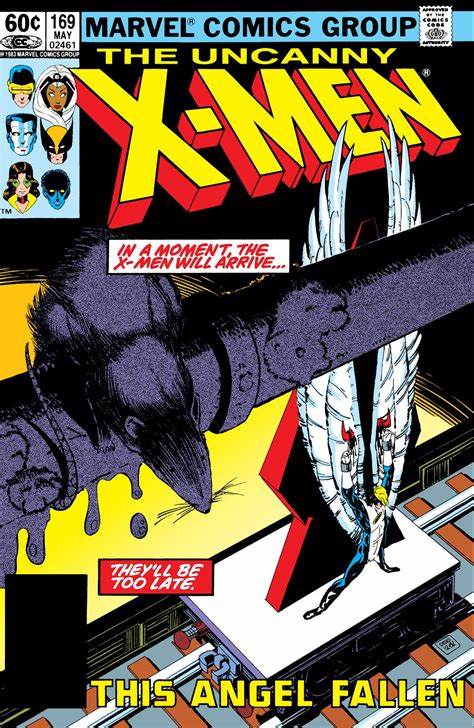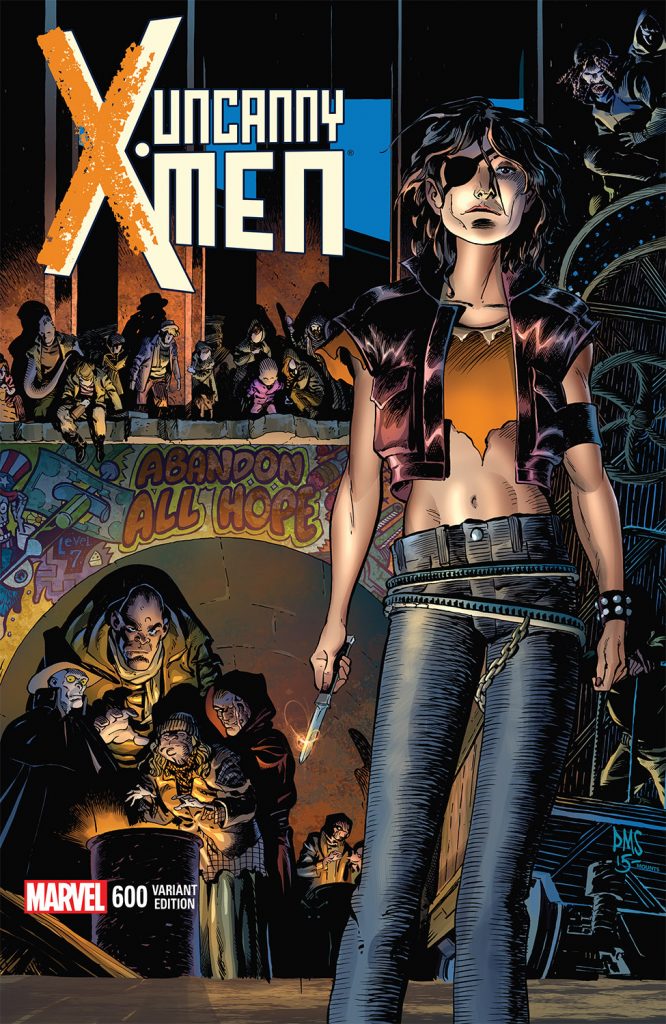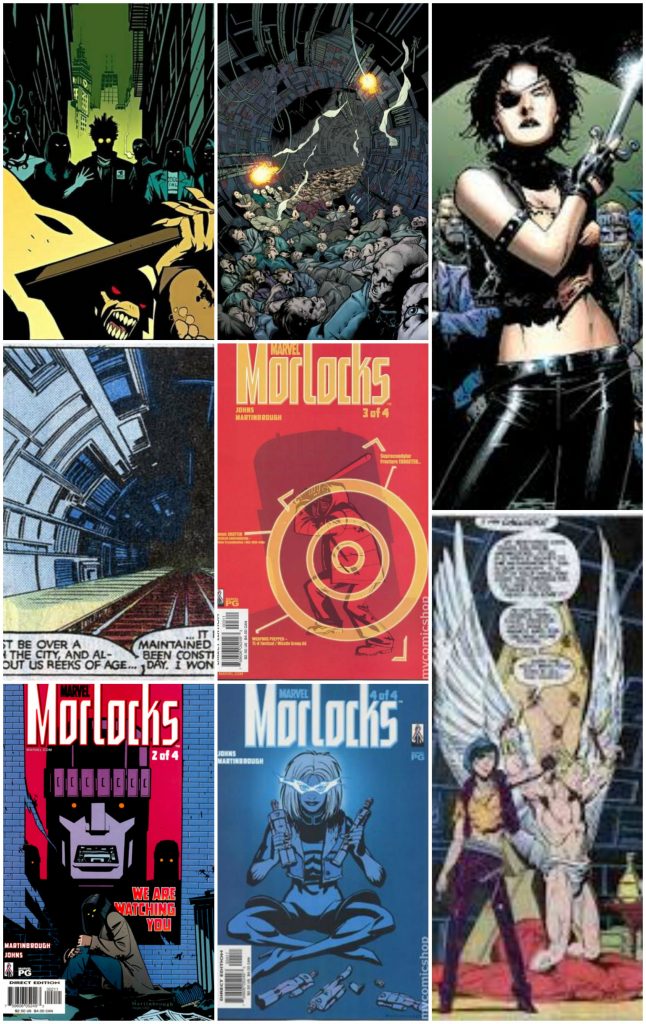Here’s a comic book review of the Uncanny X-Men 169 (1983), which is titled “Catacombs”.

To begin, Angel is kidnapped at his Manhattan apartment by a strange figure. This starts when his girlfriend, Candy, arrives late to find his blood and feathers, which are signs of a struggle. Furthermore, the kidnapper is still in the apartment, so Candy contacts Professor Xavier who sends the Uncanny X-Men.
Instantly, Xavier telepathically contacts Nightcrawler to check out Candy. Though in the middle of a date with Amanda Selfton, Nightcrawler teleports to Angel’s apartment and catches Candy who is hurled out of a window at that moment. Acting quickly, Nightcrawler catches Candy and teleports her back to his home while landing in the hot tub. However, before he leaves, he notices a dark figure carrying something over his shoulder into a subway entrance.

After awhile, the X-Men meet with Candy to find out the story. Candy talks about coming to Angel’s apartment, a struggle, and a strange figure. At this point, the X-Men are dispatched to investigate a dark figure last seen at the subway entrance, which leads underground.
In order to understand this issue, we need to go back to X-Men 148, which introduces the Morlocks who hide in society. Morlocks are mutants with mutant genes, which give them extraordinary powers; moreover, they dwell underground in Manhattan in a network of abandoned, interconnected tunnels, which had originally been built as Cold War bomb shelters then forgotten. Morlocks resemble the “undesirables” of society: misfits, outcasts, eccentrics, mavericks, nonconformists, individualists, etc. Originally, H. G. Wells introduced the futuristic Morlocks as a super-human race living under the earth in his book “The Time Machine”.

Morlock characters are revealed in X-Men 169. Such characters include: Calisto, Caliban, Masque, and Sunder. Calisto is the leader of the Morlocks and has super-human senses like speed, agility, heighten strength, and reflexes. Caliban has super-human tracking abilities to track other mutants. Masque can alter flesh of humans and animals. Sundar has super-human strength. These are just a few Morlocks; there are thousands.
One reason I liked Uncanny X-Men 189 is because it has lots of old technology. First, we see a phone with actual push buttons, which has speed dial and names on paper. Second, Candy contacts Professor over an old landline phone. Third, we see tube television monitors. Forth, books are in this comic. Fifth, there’s a strange machine called a “Mini Cerebro,” which is similar to an IPhone GPS app. Today, this technology is obsolete.
In conclusion, X-Men 169 is a great comic for a variety of reasons. Mainly, it’s a great comic for introducing the idea of hidden groups (Illuminati), individuals, or societies, which exist secretly in society; that is, people who possess extra-ordinary powers. That being said, observant people knew these kinds of people existed in the 1970s and 1960s, but it was only acceptable to write about them in comics. Also, it introduced the ideal of homelessness, which was largely hidden even in the 1980s in an acceptable way for people to learn about. Plus, it dealt with the issue of genetics and mutations, which was ahead of it’s time. Finally, issue 169 was interesting for highlighting obsolete technology.
